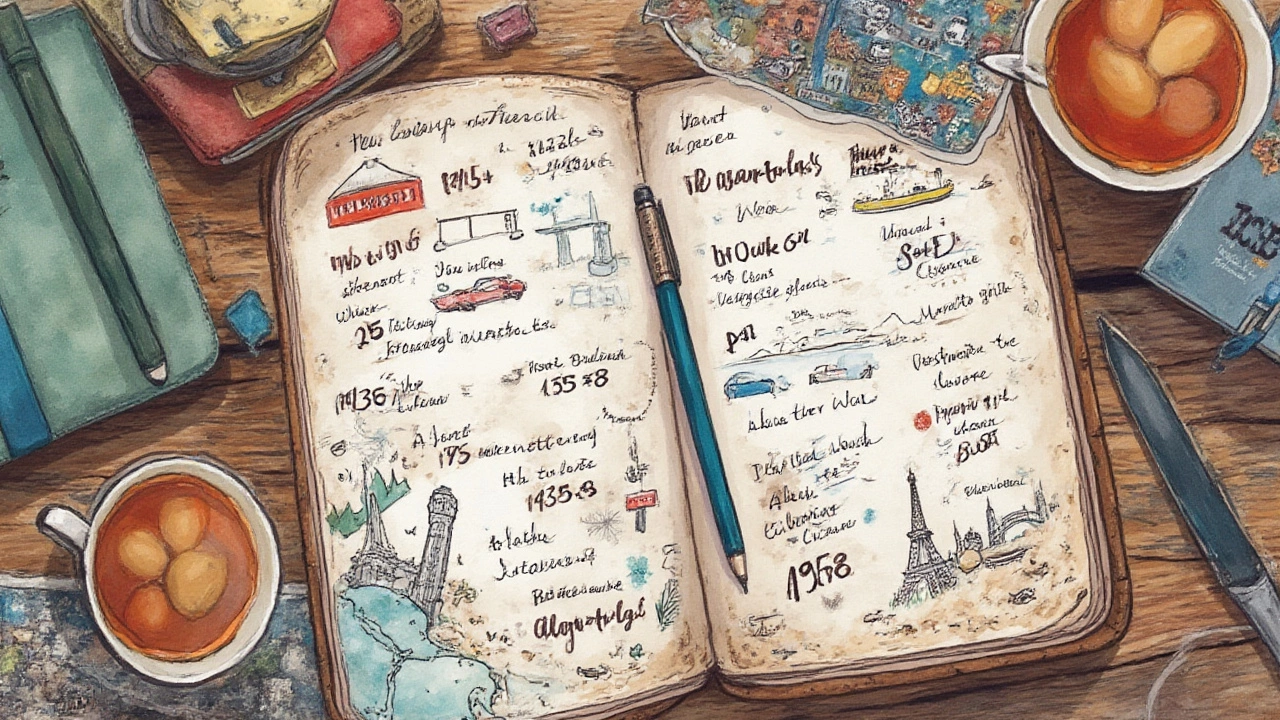Cheapest Countries to Visit: Where Your Money Goes Furthest in 2025
 Jul, 23 2025
Jul, 23 2025
Picture this: waking up to mountain views, a hearty breakfast, and a new city to explore—all for less than the cost of your daily lunch back home. Some say the golden days of cheap travel are gone, yet travelers keep finding places that deliver jaw-dropping value. So, where does your cash still make you feel like royalty?
Why the Search for the Cheapest Country to Visit Never Ends
Penny-pinching travelers are always scouting for the world's cheapest country to visit, but the truth shifts year to year. Currency rates bob up and down, and a government decision or a backpacker video going viral can change everything. What felt like a hidden bargain yesterday can fill with tour buses next month. Take Georgia: just five years ago, you could cross the entire country for pocket change, but a surge in digital nomads sent prices climbing fast. Or think of Vietnam, where that $1.50 bowl of pho still exists but is trickier to find in Saigon than it used to be.
What sparks this hunt for the cheapest destinations? Plain economics, mostly. Airfare takes a huge bite out of many budgets. But once you arrive, what really matters is daily expenses: food, beds, transportation, tours. If you want to live large for less—think private rooms instead of bunk beds, local snacks on tap, and action-packed days—a country where the cheapest country to visit matches your vibe is gold. And here’s another fact: travelers often overlook how certain seasons or regions inside a country slash your costs big time.
Countries Where Your Pounds or Dollars Stretch the Furthest
Let’s get real about the numbers. According to Price of Travel’s Backpacker Index for 2025, South Asia is unbeatable. Nepal, the classic for trekking fans, lets you find private rooms and decent meals for under £20 per day—even in the capital. Street food is both legendary and laughably cheap. In Pokhara, a plate of momos costs less than a coffee back home. Between April and September, rain showers mean even fewer crowds and better deals.
Another favorite, Vietnam, keeps costs low for just about everything. A budget traveler can spend close to £15–20 a day, enjoying strong coffee, endless noodles, and cheap trains for hopping city to city. Hostels from £4, and even boutique hotels usually cost less than a takeaway dinner in London. Cambodia is on the same level: see the ancient city of Angkor for a few dollars per entry and find private rooms for about £8 a night. For travel nuts who want value and wild adventures, these spots are hard to beat.
Georgia and Armenia in the Caucasus are also picking up steam for budget trips. In Kutaisi or Tbilisi, a decent meal and a hearty glass of wine might cost £3–£5. Even better, public minibuses (known as marshrutkas) are often under £1 per ride. Eastern Europe’s stars—like Albania and North Macedonia—offer classic Mediterranean vibes, mountain landscapes, and blissfully affordable prices. A table for two with plenty to eat and drink? Still under £15 in most places outside the capitals.
Here’s a quick snapshot for comparison:
| Country | Avg. Budget Per Day (GBP) | Accommodation (Night) | Meal (Restaurant) |
|---|---|---|---|
| Nepal | £15 | £3–£6 | £1–£3 |
| Vietnam | £18 | £4–£8 | £1–£2 |
| Cambodia | £19 | £5–£8 | £2–£4 |
| Georgia | £21 | £6–£12 | £3–£5 |
| Albania | £22 | £8–£15 | £3–£7 |

Hidden Costs and Money-Saving Hacks While You Travel
Even in dirt-cheap countries, some travelers blow their budgets and wonder where all the savings went. So, what’s draining your wallet abroad? Western-style bars, fancy coffees, and imported goods can really add up. In Hanoi, a local beer is 30p, but at an expat bar, the same bottle jumps to £2. Want to rent a motorbike? Rental prices are great in Southeast Asia—sometimes under £5 daily—but skip the insurance or take a wrong turn, and small mishaps can cost a fortune. Always snap photos of your rental before zooming off and make sure the fuel policy is crystal clear.
If you book all your activities through third-party websites, expect to pay more than a local on the street. Many day trips—like a Halong Bay cruise or a waterfall hike in Georgia—are cheaper if you team up with others in your hostel or buy directly. In Nepal, trekking solo lowers costs, but make sure you have the right permits and enough cash to cover unexpected fees at checkpoints.
Some tips you’ll thank yourself for later:
- Eat where locals eat. Not only is it cheaper, but the food tastes way better.
- Travel off-peak—the shoulder seasons (April–June, September–November in most places) are wallet-friendly and crowds are thinner.
- Cash is king in many countries, but don’t keep it all in one pocket. Secure a stash somewhere safe.
- Learn a few simple words in the local language—just "hello" and "thank you" can get you friendlier prices.
- Negotiate, but politely. In markets and guesthouses, there’s room for a deal, but don’t overdo it for a £1 discount.
Transport can eat up your money fast. Overnight trains or buses combine travel and accommodation—two birds, one stone. For city rides, ride-sharing apps often beat metered taxis. In Asia, Grab and Gojek rule, while Bolt is popular across Europe and the Caucasus.
How Travel Styles Shape the Cheapest Country for You
The words "cheap holiday" look different to everyone. Some people adore camping and public transport; others crave creature comforts like private rooms and restaurant meals. Where you go and how you travel both matter for total costs. In India, £10 covers a guesthouse, food, and trains in small towns, but Mumbai or Delhi can double those prices quick, especially if you crave air-con or international cuisine.
For digital nomads, the equation shifts: you’ll need Wi-Fi, distraction-free spots to work, and maybe chunkier accommodation budgets. Indonesia’s Bali is cheap for day-to-day life, yet fast, reliable internet and nice workspaces come at a premium. In Mexico, Oaxaca and Merida are wallet-friendly, but head to Tulum and your daily spend skyrockets. For culture and city breaks, look for secondary cities—Tirana not Athens, Lviv not Kyiv, or Da Nang instead of Ho Chi Minh City.
The season changes everything. Europe’s summer is high season (read: expensive), but spring and autumn in the Balkans or Eastern Europe mean lower prices and open roads. In Southeast Asia, monsoon months often scare away the crowds, so even top tourist areas get big discounts—just pack breathably and plan some rainy-day activities.
And don’t write off hidden gems like Bolivia or Uzbekistan for wild, affordable adventures. Both countries let you see some seriously mind-blowing landscapes (think Uyuni or Samarkand) on less than £25 a day. Plus, they’re off most mainstream itineraries, so your photos and stories stay original long after you return.

The Bottom Line: Best Bets for the Cheapest Country to Visit in 2025
Ready to decide? If you’re in it for stretching your money to the max, South and Southeast Asia totally win for 2025. Nepal, Vietnam, and Cambodia still offer insane value for money—think amazing food, unique sights, warm hosts, and that feeling of adventure you can’t put a price tag on. The Caucasus and Eastern Europe are perfect if you want European culture without European prices. Insider travel forums suggest 2025 could bring even more bargains in places like Kyrgyzstan, with its untouched mountains, and Sri Lanka, where tourism’s still rebounding so discounts are everywhere.
Here’s what never changes: the cheapest country is the one that fits your style and plans. For culture-centric explorers, Armenia or Georgia might feel like a steal. Adventurers on the hunt for nature will drool over Nepal or Vietnam. And if you like beaches, small Balkan coast towns—Albania’s riviera, for example—deliver turquoise water at a fraction of Croatia’s costs.
No matter where you touch down, start with local food, skip the obvious chain hotels, and get curious about side streets, family-run guesthouses, and local transport options. Then let the stories and savings pile up, meal by meal and ride by ride.
